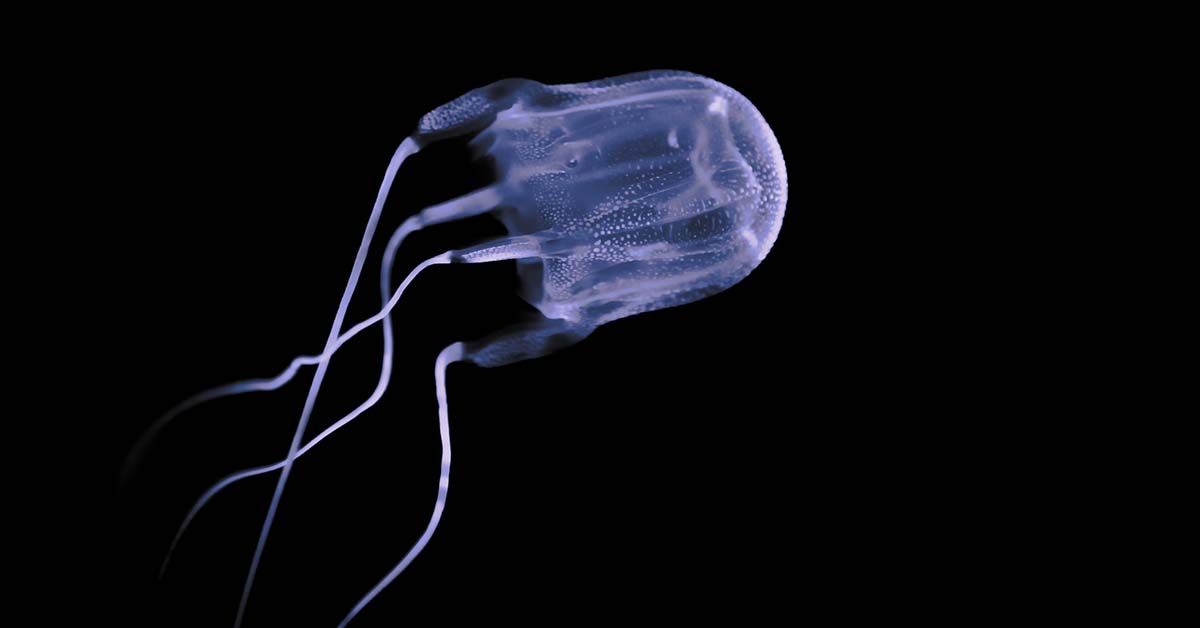If you’re planning to frolic in the ocean, you should be prepared for the possibility that you could brush up against a jellyfish and get stung.
The good news? Although painful, it’s unlikely you’ll suffer any lasting harm.
“We have multiple types of jellyfish in South Carolina, but fortunately none that cause life-threatening stings,” says Dr. William Richmond, director of emergency services at Tidelands Health. “It’s very rare in our area to have a systemic reaction from a jellyfish sting that would require emergency medical attention. It’s almost always just a local reaction.”
The most common jellyfish along South Carolina beaches are cannonball, mushroom, moon, lion’s mane, sea nettle and sea wasp. A sting from one of these jellyfish can range in severity from mild burning and redness to moderate pain.
Also found along the state’s coast are Portuguese men-of-war, which look like a jellyfish but are actually a type of animal known as a siphonophore. A man-of-war can inflict a painful, burning sting that can cause muscle and joint pain, chills, fever, nausea and headache. The man-of-war is easily identifiable by its blue balloon-like structure and long purple, white and blue tentacles that swirl through the water beneath its translucent body.
“Most people with jellyfish stings run into the tentacles in the water,” Dr. Richmond explains. “The tentacles have a firing mechanism called nematocysts that fire barbs of toxin that cause stinging pain and itching. If you get stung, you want to get the stingers off as quickly as possible.”
Even severed tentacles that have washed ashore should never be handled, says Dr. Richmond. The tentacles, though dried or withered, can still contain venom in their barbs.
How to treat a sting
- If stung by a jellyfish, get out of the water and rinse with salt water or vinegar. Fresh water can intensify the sting and release more venom into the body, Dr. Richmond says. Vinegar works to neutralize the stinger so it cannot release more toxin.
- Once you have rinsed the area, remove the microscopic barbs using a credit card or other flat-edge item. Tweezers are also helpful for removing any visible tentacles. Don’t use your bare hands to scrape them away because of the risk of encountering active stingers.
- Avoid home remedies that have no scientific basis. One home remedy that continues to remain popular – but simply doesn’t work – is urinating on a jellyfish sting. “It’s just not effective,” Dr. Richmond says. “There’s just not any science behind it.”
- Soak in a tub of warm water for up to 30 minutes to relieve any residual pain at the site.
- Use over-the-counter pain medication such as ibuprofen or acetaminophen to help with any generalized pain. For itching, you can try Benadryl or hydrocortisone cream. Symptoms from most jellyfish stings resolve within 24 hours.
When to see a doctor
- If the site of the sting worsens, becomes swollen and tender to the touch or remains painful over time, see a doctor to ensure an infection hasn’t developed.
- An allergic reaction that requires emergency care is rare; indications can include hives, blistering, difficulty breathing and severe itching. If you have any concerns that you may be suffering an allergic reaction, call 911.
